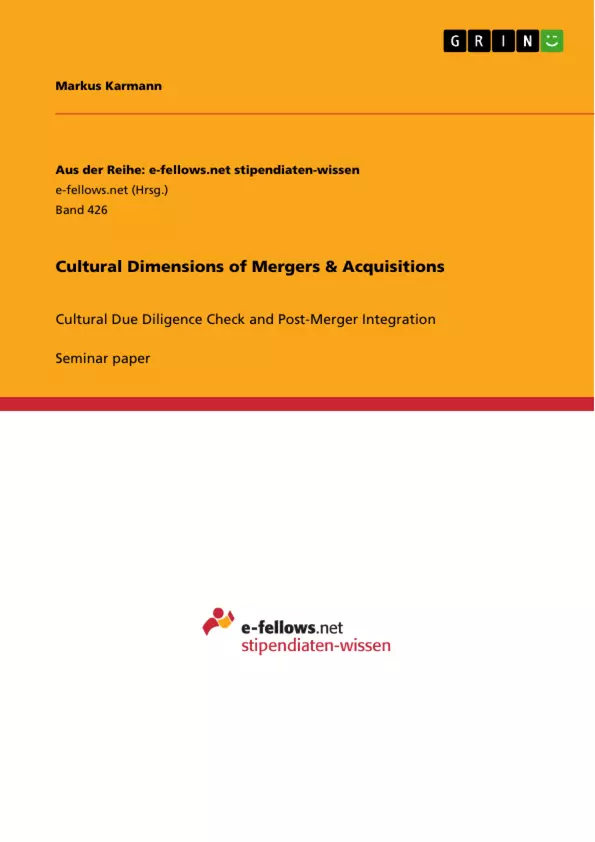Over the past several decades, the global economy has become increasingly intertwined as emerging markets continue to grow. Trade barriers have been broken by free trade agreements and the creation of the World Trade Organization while advancements in technology have allowed for the instantaneous transmission of information across the world. In order to expand operations, companies are increasingly looking towards mergers and acquisitions to grow operations internationally. Over the past 10 years, there have been over 251,000 global merger and acquisition transactions valued at $23 trillion US dollars (Exhibit A). While the recent downturn in the global economy has seen transactions decline from a peak of over $4 trillion dollars in 2007 to $2.19 trillion in 2010, M&A activity is expected to rebound given high cash levels and strong fundamental support for M&A , stronger growth levels in emerging markets and a desire for international acquisitions in order to “mitigate the risks of expanding in the global market.”
While there is a strong demand to expand in the global market and technological advancements have allowed for ease of evaluating a potential M&A opportunity, there remains a wide cultural gap that one must understand and bridge in order to be successful. In this paper, we describe the phases of the merger process and show important factors that must be examined. We will not only focus on the cultural dimensions of Hofstede and other tools learned in class but also analyse the importance of premerger cultural due diligence and the post-merger integration process.
Our extensive research on the post and pre-merger process is complemented by our examination of ASG, a company that has conducted numerous acquisitions over the past 20 years. The company is a software company founded in 1986. Our examination of ASG shows the ability of successfully evaluating the culture of the organization in the pre-merger process and furthermore, ASG’s ability to successfully integrate the acquisition.
Inhaltsverzeichnis (Table of Contents)
- Introduction
- Pre-Merger Cultural Due Diligence
- Assessing Organizational Culture
- Cultural Due Diligence Pre-Merger Process
- Planning of the M&A Transaction
- Getting in Contact with the Target Organization
- Concrete Negotiations
- Post-Merger Integration
- Reasons for Post-Merger Integration Failures
- Strategic and Operative Approach to Post-Merger Integration
- Integration Management
- Staffing
- Cultural Integration
- Reasons for ASG’s Success in the M&A Market
- Recommendations for ASG
- Conclusion
Zielsetzung und Themenschwerpunkte (Objectives and Key Themes)
This paper examines the cultural dimensions of mergers and acquisitions, focusing on the pre-merger and post-merger integration phases. The paper analyzes the importance of cultural due diligence in achieving successful merger outcomes. It explores key cultural factors that contribute to the success or failure of M&A transactions.- The significance of cultural due diligence in M&A transactions
- The role of organizational culture in achieving synergy expectations
- The impact of cultural differences on post-merger integration
- Key cultural factors that influence the success of M&A transactions
- The importance of bridging cultural gaps in the global M&A landscape
Zusammenfassung der Kapitel (Chapter Summaries)
- Introduction: The paper introduces the growing importance of mergers and acquisitions (M&A) in a globalized economy, highlighting the increasing number of transactions and the challenges posed by cultural differences. It also introduces ASG, a software company that has successfully navigated numerous acquisitions.
- Pre-Merger Cultural Due Diligence: This chapter emphasizes the critical role of cultural due diligence in the pre-merger phase. It argues that cultural factors are the primary reason for M&A failures and defines cultural due diligence as a tool for identifying strengths and weaknesses of both parties involved in a potential merger. The chapter also discusses different layers of organizational culture and how they impact M&A transactions.
- Post-Merger Integration: This chapter explores the challenges of post-merger integration, identifying common reasons for integration failures. It outlines a strategic and operative approach to integration, focusing on key elements like integration management, staffing, and cultural integration. The chapter emphasizes the need for a structured and well-planned integration process to ensure successful outcomes.
Schlüsselwörter (Keywords)
The key themes and concepts explored in this paper include cultural due diligence, organizational culture, post-merger integration, cultural differences, M&A success factors, global mergers and acquisitions, cultural gap, and international business.- Quote paper
- Markus Karmann (Author), 2011, Cultural Dimensions of Mergers & Acquisitions, Munich, GRIN Verlag, https://www.grin.com/document/193108



